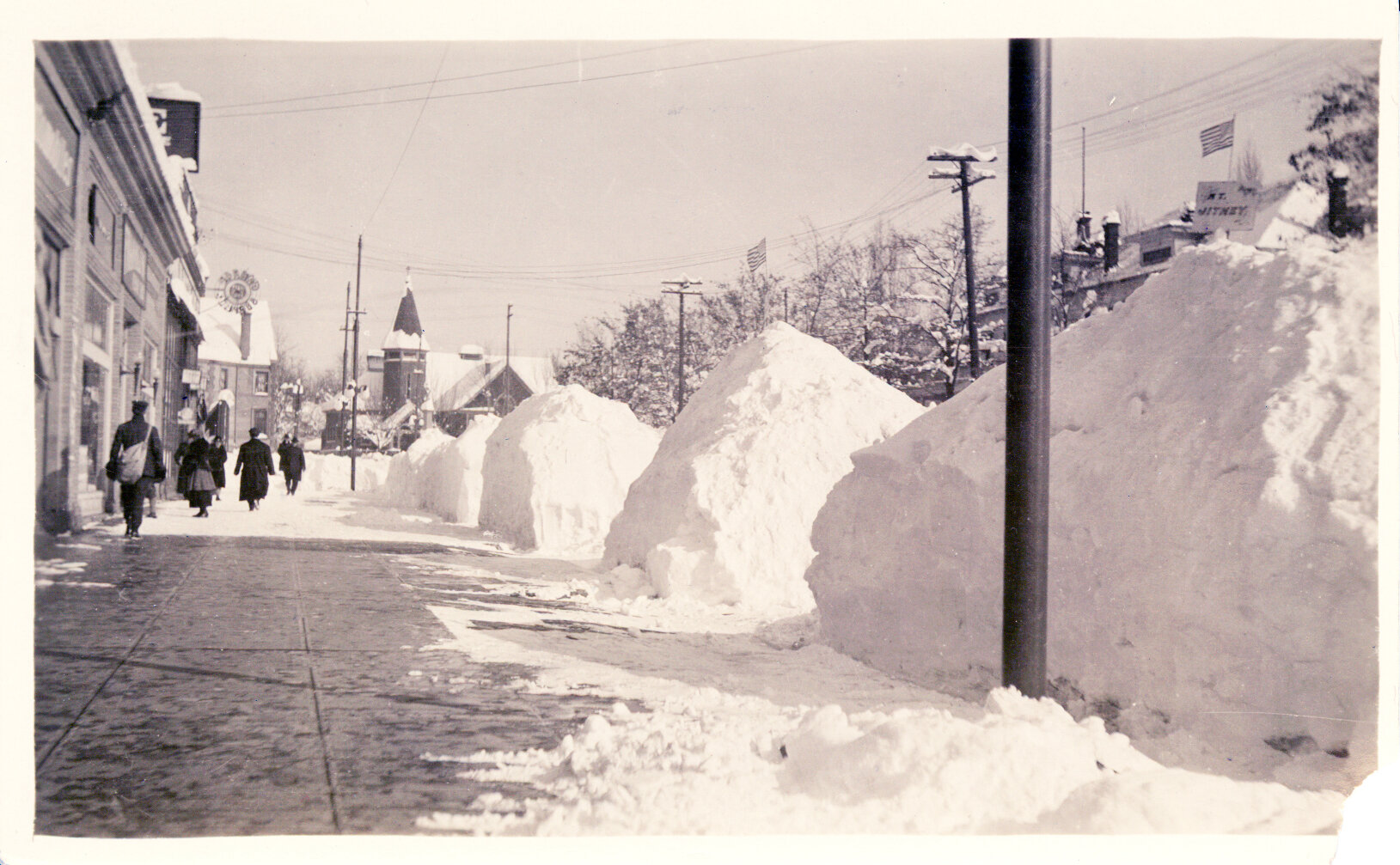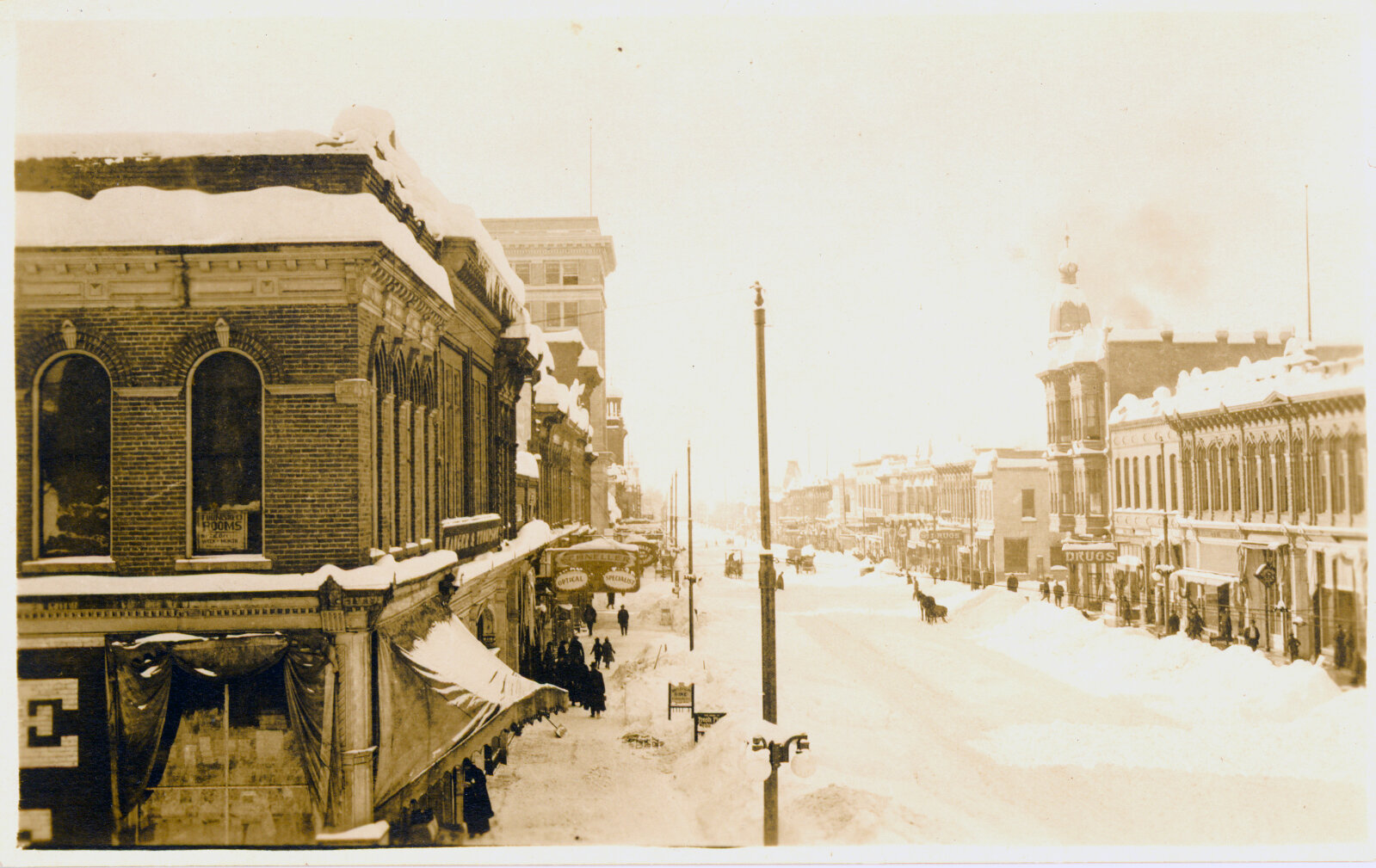Postcards capture the winter of 1915-16, here looking east along Alder Street toward the First Congregational Church. FWWM archives.
The winter of 2018-19 has been record-setting, with February snows reaching a whopping two feet. We can at least take comfort that it isn’t as cold as some notable past Walla Walla winters.
According to the January and February editions of the 1862 Saturday Morning Washington Statesman, this area was receiving the severest weather in recent memory. Throughout January, the valley received from a foot to a foot-and-a-half of snow, two to three feet in the hills, with some areas having drifts four and five feet deep. e snows continued into February, forcing businesses to stay closed and communications to shut down as mail coaches couldn’t travel through the deepening snow. Out of the nearly 30,000 cattle in the valley, fewer than 5,000 were estimated to have survived. A low of -29° was recorded with an estimated average temperature of -10° during the winter spell.
The papers reported a delay of the stagecoach from Portland via the Dalles of 53 days and counting (normal service was one coach weekly). Mining news from Idaho was that snowdrifts from ten to fifteen feet high in the mountains had stopped work, though there were plenty of provisions for animals and people alike. Operations would not be expected to resume until the spring.
A warning from the Statesman: “We deem it important that the history of the present winter season should be put on the record . . . that they may prepare for its recurrence; and also to give a truthful impression to those who are contemplating removing hither for permanent settlement, that they may know what kind of climate they will be liable to find.” The good news is that the paper reported that the snow was almost entirely gone in their March 22 issue. Unfortunately, there was mud left in the roads just as deep, which caused a slew of other problems.
Looking down snow packed Main Street at the intersection of First Avenue, 1916. FWWM archives.
Another notable snowfall occurred in the winter of 1916. Between December 28 and February 6, the valley reportedly received 77 inches of snow. The Museum has three postcards in its collection that capture the massive piles of snow that had been cleared off the roads and sidewalks. The temperature was recorded as low as -7°. According to Up-To-The-Times magazine, the mounds of shoveled snow resembled mountain ranges rising along the streets. The magazine also mentioned that only the winter of 1861-62 surpassed this “freak winter” in severity, especially since pioneers lacked the modern-day conveniences available to Walla Wallans after the turn of the century.



